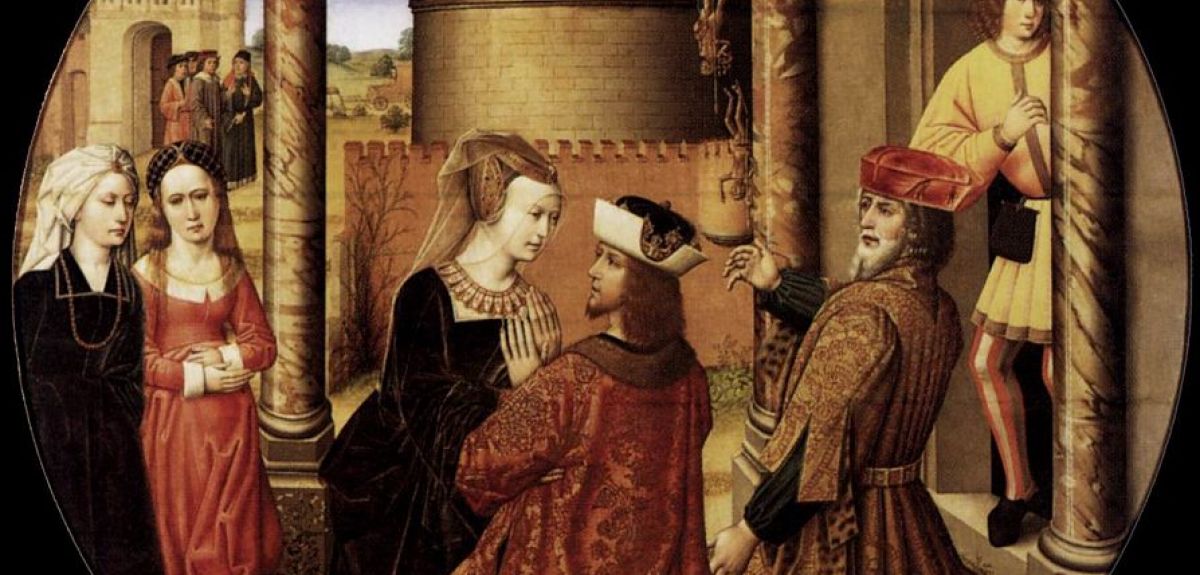
Investigating the claim that Jesus was 'married with two children'
Over the last few days, media outlets from Fox News to Russia Today have reported on a new book claiming to have uncovered a previously censored ‘fifth gospel’ which they say reveals that Jesus married Mary Magdalene and they had two children. In The Lost Gospel, which is published today, Professor Barrie Wilson and writer Simcha Jacobovic claim to have translated a manuscript dating from around 600 CE and written in Syriac, a dialect of the Aramaic language spoken by Jesus.
Jonathon Wright, a DPhil student in Oxford University’s Oriental Institute, has studied the Syriac version of the ancient story of Joseph and Aseneth, on which these claims are based. He assesses the sensational claims in a guest post for Arts Blog and concludes that they are not at all credible.
'The story referred to is commonly called Joseph and Aseneth. It was originally written in Greek and translated into a number of ancient languages. The story deals with Genesis 41.45, which says Pharaoh gave Aseneth, the daughter of a pagan priest, to Joseph as a wife.
It seems Jews and Christians worried about how Joseph could marry a presumably idol-worshipping woman, especially as the children were the ancestors of two tribes of Israel. Joseph and Aseneth tells us that Aseneth was converted to worshipping God through repentance and fasting after meeting Joseph.
Let us consider two of the sensationalist claims made in the book. First, “the story is about Jesus.” For early Christians, their Bible was the same as that of Jews. Important figures in the Old Testament came to be seen as types of Jesus. Christians saw in a popular figure like Joseph some elements of Jesus’ ministry.
The book's authors claim the story is about Jesus all along, but there is no evidence for this in the text, or any of the 90 or more manuscripts still existing today- indeed in the Armenian tradition it is often in the Old Testament. Joseph in the story does not do anything we associate with Jesus. The story was probably often copied because it was not controversial and because Christian beliefs about repentance and conversion were portrayed in an apparently Jewish story.
Secondly, “the story was censored.” A good conspiracy theory always helps improvable claims. In the oldest Syriac manuscript, the end of a letter from the translator and the first chapter is lost. It appears that this letter was just about to provide some interpretation about the story. The authors of this book suggest it was torn out because it said that Joseph really was Jesus.
We can strongly doubt this! It is much more likely that the page was lost through wear. There are several other places this has happened in the manuscript. The story was copied into another Syriac manuscript in the middle ages, and this included the opening chapter, so the page still existed hundreds of years after it was written. This later manuscript has many works of the Church Fathers which would absolutely dispute that Jesus was ever married. Probably, the copyist thought the message of the work was clear enough and not controversial.
The one good aspect of this book is that hopefully more students will want to learn Syriac and discover the wealth of literature which extends to the present day. With the war in Syria and Iraq at the moment, a poignant fact is that many truly remarkable stories and histories have probably been lost forever as a result of Islamic State, not to mention the human cost to a culture with roots stretching back to shortly after the time of Jesus himself.'
The Lost Gospel by Simcha Jacobovici and Barrie Wilson was published on Wednesday 12 November by Pegasus Books.